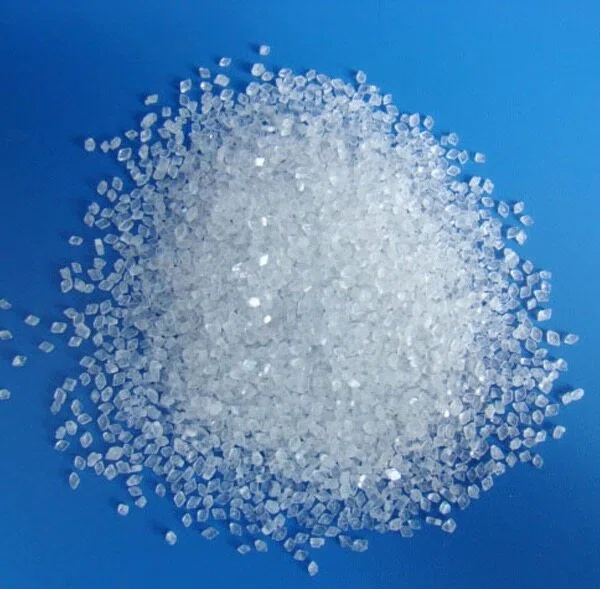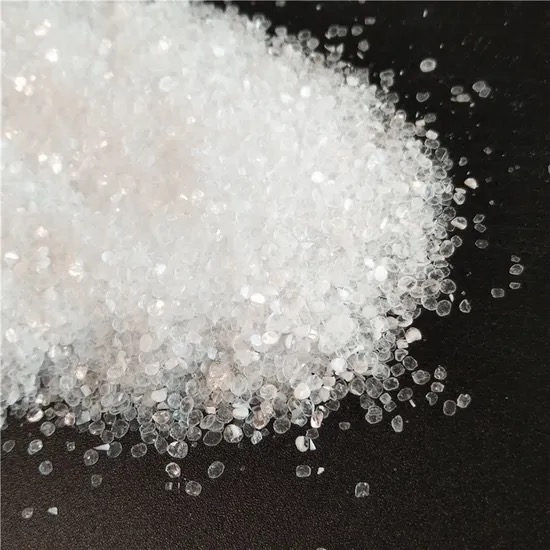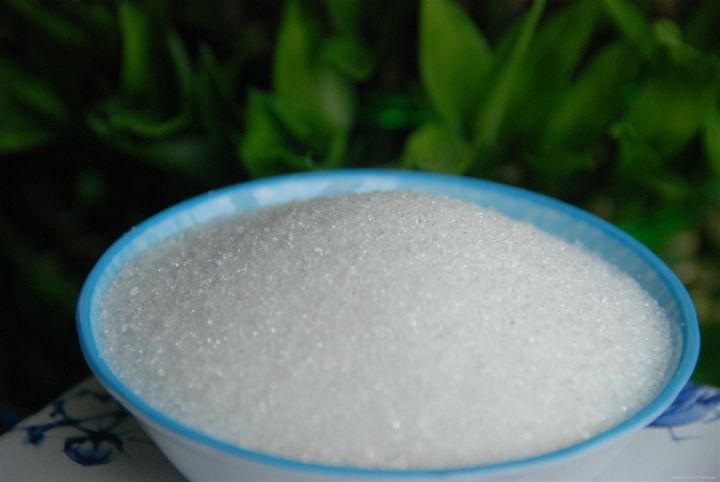Views: 222 Author: Sara Publish Time: 2025-10-30 Origin: Site








Content Menu
● 1. What Is Sodium Saccharin?
>> Common uses
● 2. Regulatory Status and Acceptable Daily Intake (ADI)
>> Acceptable Daily Intake (ADI)
● 3. Scientific Evaluation of Safety
>> Historical concerns and modern understanding
● 4. Benefits of Sodium Saccharin in Formulation
>> For food and beverage manufacturers
>> For healthcare and pharmaceutical applications
● 5. Possible Drawbacks or Concerns
● 6. Comparison with Other Sweeteners
● 7. Guidelines for Safe and Effective Use
>> Consider consumer expectations
● 8. Is Sodium Saccharin Bad for You?
● FAQ
>> 1. What is the safe daily intake of sodium saccharin?
>> 2. Does sodium saccharin cause cancer?
>> 3. Is sodium saccharin suitable for people with diabetes?
>> 4. Can sodium saccharin be used in heat-processed foods?
>> 5. Are there any side effects from consuming sodium saccharin?
As one of the oldest artificial sweeteners still in use, sodium saccharin (also commonly known as saccharin sodium or E954) has been the subject of debate for decades. From its intensely sweet taste—roughly 300-500 times sweeter than table sugar—to its role in countless sugar-free and low-calorie foods, this ingredient often raises a key question: Is sodium saccharin bad for you?
At our factory in China, we specialise in providing healthy ingredient solutions for the food, beverage, and healthcare industries, focusing on natural sweeteners, functional polyols, and dietary fibres. We also offer blended sweetener development, tablet production, and OEM/ODM services for international manufacturers. Because we frequently formulate with sodium saccharin, we believe it's important to examine the science and regulatory context behind its safety, functionality, and reputation.
In this comprehensive article, we'll cover what sodium saccharin is, how it works, its benefits and potential risks, its applications across industries, and how manufacturers can use it responsibly.

Sodium saccharin is the sodium salt of saccharin, a synthetic compound first discovered in 1879. Chemically, it is known as 1,2-benzisothiazol-3(2H)-one-1,1-dioxide, sodium salt. It appears as a white crystalline powder that dissolves easily in water.
Sodium saccharin provides sweetness 300 to 500 times stronger than sucrose, yet it contributes virtually no calories because the human body cannot metabolise it for energy. This property makes it a valuable sweetening agent for diet, diabetic-friendly, and calorie-controlled formulations.
1. High sweetness intensity: Very small amounts achieve desired sweetness.
2. Calorie-free: Offers sweetness without energy contribution.
3. Heat and pH stability: Performs well in baking, beverages, tablets, and pharmaceuticals.
4. Long shelf life: Does not ferment or support microbial growth.
5. Synergistic blending: Enhances taste when combined with other sweeteners such as aspartame, stevia, or sucralose.
Sodium saccharin is widely used in:
- Carbonated soft drinks and sugar-free beverages
- Tabletop sweeteners
- Chewing gums
- Low-calorie desserts and baked products
- Pharmaceutical tablets and syrups
- Toothpaste and mouthwash, due to its non-cariogenic nature
In our OEM/ODM operations, we often incorporate sodium saccharin into custom sweetener blends for global brands, optimising sweetness, flavour balance, and stability while meeting local regulatory standards.
Sodium saccharin is approved by major international regulatory authorities including:
- U.S. Food and Drug Administration (FDA)
- European Food Safety Authority (EFSA)
- Joint FAO/WHO Expert Committee on Food Additives (JECFA)
- China National Food Safety Standards (GB)
Although saccharin faced temporary bans and warning labels in the 1970s due to early rodent studies, these restrictions were lifted after further research showed no comparable risk in humans.
The ADI varies slightly by region but generally falls within 5–15 mg/kg body weight per day.
For example, the EFSA sets the ADI at 9 mg/kg, meaning a 60 kg adult could safely consume up to about 540 mg per day.
Food and beverage manufacturers should use this benchmark to guide safe formulation levels. In our factory's R&D department, ADI compliance is a mandatory checkpoint before production approval.
In the 1970s, studies in male rats found bladder tumors after consuming extremely high doses of saccharin—equivalent to hundreds of cans of diet soda daily for a human. Later analysis revealed that the mechanism was species-specific: saccharin crystals combined with calcium phosphate to form urinary precipitates unique to rats.
Subsequent human epidemiological studies did not find an increased cancer risk. As a result, in 2000, the U.S. National Toxicology Program removed saccharin from its list of potential carcinogens. The IARC similarly downgraded it to "not classifiable as to its carcinogenicity to humans."
Unlike sugar, sodium saccharin does not raise blood glucose or insulin levels. It passes through the body unmetabolised and is excreted unchanged in the urine.
This makes it a preferred sweetener for people with diabetes or obesity, and for low-glycaemic diet formulations.
Some animal studies have explored whether non-nutritive sweeteners affect metabolism or weight gain indirectly via changes in appetite or gut microbiota. However, current human evidence remains inconclusive, and normal consumption within ADI limits is considered safe.
Recent research has looked into how artificial sweeteners might alter gut bacteria composition. While some studies suggest possible microbiota shifts at high intakes, there is no strong human evidence linking sodium saccharin to adverse digestive outcomes at typical dietary levels.
In formulation design, our approach combines saccharin with prebiotic fibres such as inulin or resistant dextrin, which support gut health and offset any potential imbalance.
Sodium saccharin is a sulfonamide derivative, so individuals with sulfa-drug allergies should be cautious. Allergic reactions are extremely rare but can occur. Manufacturers should ensure proper labelling to inform sensitive consumers.
- Cost-effective sweetness: Because it's hundreds of times sweeter than sugar, manufacturers can achieve significant cost reduction.
- Stable under heat and acidity: Ideal for beverages, sauces, and bakery applications.
- Sugar replacement flexibility: Compatible with polyols like maltitol or erythritol for balanced sweetness and improved mouthfeel.
- Supports clean label goals: Helps reduce sugar without sacrificing taste, aligning with global sugar-reduction initiatives.
- Improved palatability: Masks bitter flavours in medicines, chewable tablets, and syrups.
- Non-cariogenic: Does not contribute to dental caries.
- Zero calories: Useful in nutritional supplements and diabetic formulations.
- Weight management: Enables enjoyment of sweet taste while reducing calorie intake.
- Blood sugar control: Safe for diabetics under guidance.
- Oral health: Sugar-free products containing sodium saccharin help prevent tooth decay.

Despite its safety record, sodium saccharin has a few limitations to consider:
- Aftertaste: At high concentrations, it can leave a slightly bitter or metallic aftertaste. Blending with other sweeteners helps mitigate this.
- Public perception: Some consumers perceive artificial sweeteners as "chemical" or less natural. Educating customers and transparent labelling are essential.
- Not ideal for all product types: While excellent for beverages and tablets, it provides no bulking or texture, so sugar alcohols or fibres are often added to improve mouthfeel.
- Sensitive populations: Individuals with sulfa allergies should avoid products containing it.
- Regulatory variations: Maximum permitted levels differ by country, requiring careful review for international products.
| Sweetener | Sweetness (vs. sugar) | Calories | Heat Stability | Key Traits |
|---|---|---|---|---|
| Sodium Saccharin | 300–500× | 0 | High | Oldest synthetic sweetener, strong taste |
| Aspartame | 200× | 4 cal/g | Low | Not heat-stable; used in cold drinks |
| Sucralose | 600× | 0 | High | Excellent for baking, clean taste |
| Stevia | 200–300× | 0 | High | Natural, plant-based |
| Erythritol | 0.7× | 0.24 cal/g | High | Sugar alcohol, provides bulk |
| Monk Fruit Extract | 150–250× | 0 | Moderate | Natural sweetness, fruity notes |
In our manufacturing practice, sodium saccharin is often used as a synergistic enhancer—a small percentage of it intensifies overall sweetness and rounds off flavour in combination with natural sweeteners like stevia or monk fruit.
Formulators must comply with regional maximum use levels and ADI guidelines. For global distribution, verifying the local legislation of each market is essential.
To improve mouthfeel and reduce aftertaste, blend sodium saccharin with:
- Polyols such as maltitol, isomalt, or xylitol
- Natural sweeteners like stevia or monk fruit
- Flavour modifiers or masking agents
When marketing to consumers, transparency builds trust. Highlight the functional purpose (sugar reduction, calorie control) and safety evaluations by EFSA or FDA.
Every batch should come with a certificate of analysis (COA) confirming purity and compliance. Monitoring for contaminants and maintaining consistent particle size ensures uniform dispersion in final products.
Our R&D department continually explores sweetener blends that combine saccharin with fibres or natural extracts to create more balanced and health-oriented sweetness systems for food, beverage, and healthcare brands worldwide.
When evaluated objectively, the evidence shows that sodium saccharin is safe for human consumption within the recommended limits. The early safety concerns have been scientifically resolved, and regulatory agencies worldwide have reaffirmed its approval.
For consumers, moderate intake poses no known health risk. For manufacturers, it remains a valuable ingredient that can deliver cost-effective sweetness, calorie reduction, and formulation stability.
However, responsible use is essential: adhere to dosage limits, maintain transparency, and continue monitoring emerging research.
Sodium saccharin is one of the most researched artificial sweeteners in the world. Over a century of use and rigorous evaluation confirm that it is not harmful when used properly. For manufacturers in the food, beverage, and healthcare industries, it provides an effective, economical, and stable option for reducing sugar and calories.
At our company, we combine sodium saccharin with other sweeteners and fibres to develop optimised blends that enhance sweetness, improve taste, and meet the demands of modern health-conscious consumers. By respecting safety limits and regulatory guidance, sodium saccharin can be part of a balanced, responsible approach to sweetness innovation.

The Acceptable Daily Intake (ADI) set by EFSA is 9 mg per kilogram of body weight. For a 60 kg adult, this equals about 540 mg per day, well above typical dietary exposure.
No. Modern research and regulatory reviews have found no link between sodium saccharin and cancer in humans. The 1970s rat studies do not apply to humans, and saccharin has been removed from carcinogen lists.
Yes. It contains no carbohydrates or calories and does not raise blood glucose or insulin levels, making it suitable for diabetic diets when consumed in moderation.
Yes. Unlike aspartame, sodium saccharin is heat-stable and works well in baked goods, canned fruits, and hot beverages, as well as in tablets and syrups.
Side effects are rare. Extremely high intake may cause digestive discomfort in sensitive individuals, and those allergic to sulfa drugs should avoid it. Staying within ADI ensures safety.
